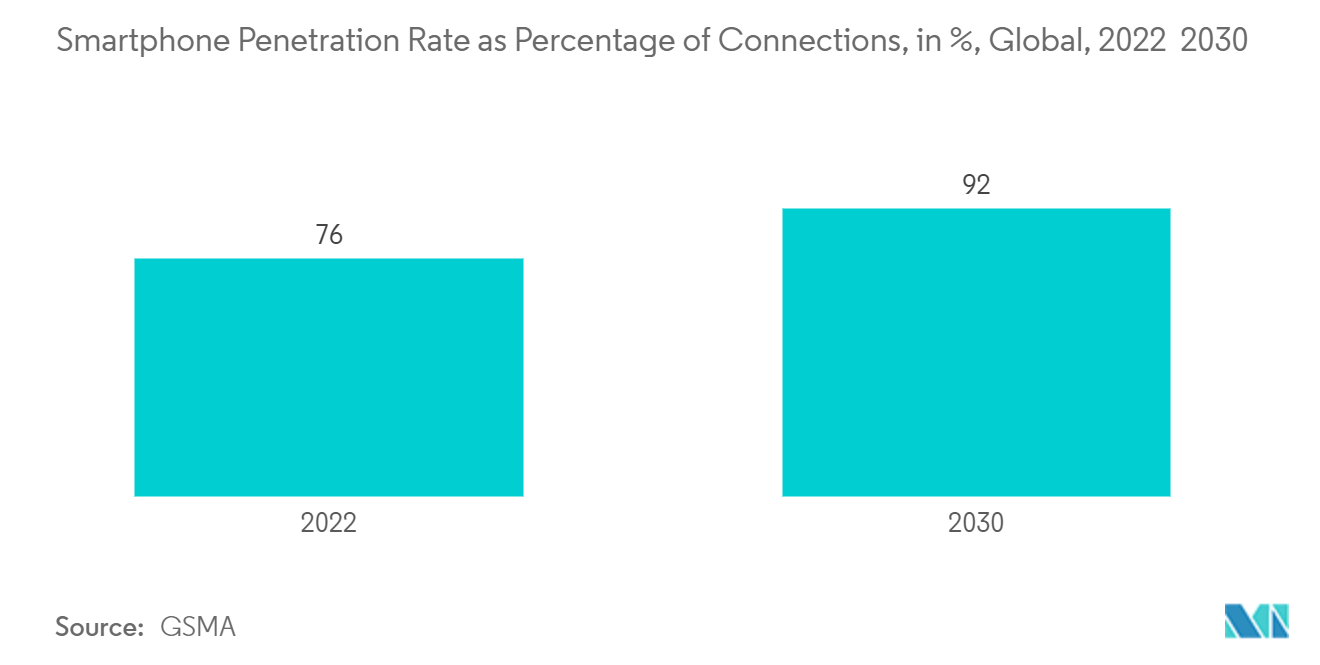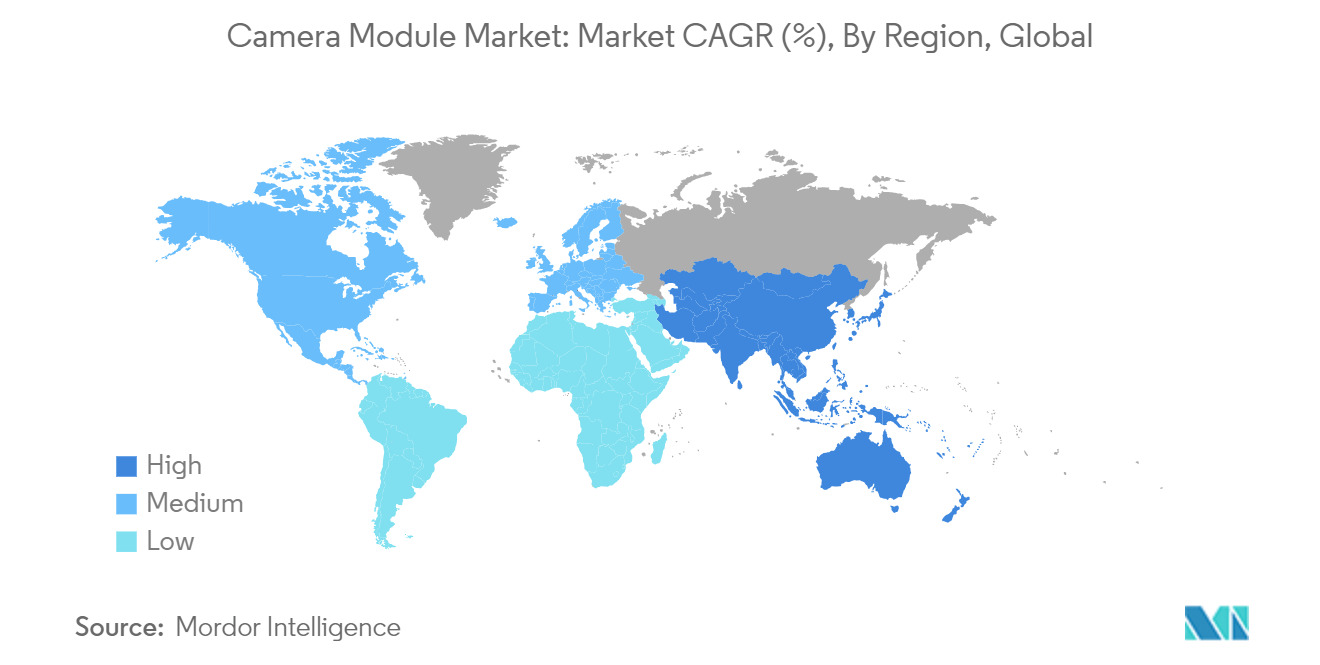Market Trends of Camera Module Industry
The Mobile Segment is Expected to Hold a Notable Market Share
- The growing sales of smartphones across economies with slower technological developments and budgets propel the growth of the camera module market. According to GSMA, global smartphone penetration as a percentage of connections will likely increase from 76% in 2022 to 92% in 2030.
- According to GSMA, the number of smartphone subscribers in North America is anticipated to reach 328 million by 2025, with the region witnessing an increase in the number of mobile phone subscribers (86%) and Internet penetration (80%). Furthermore, by 2025, Europe is estimated to register the highest internet penetration rate (82%) and smartphones (88%). All these factors would contribute positively to the market's growth.
- The increasing demand to improve camera resolution across smartphones of all ranges has enabled several manufacturers to launch new sensors and camera modules. For instance, in January 2023, Samsung introduced its latest 200-megapixel (MP) image sensor, the ISOCELL HP2, with improved pixel technology and full-well capacity to improve mobile images in premium smartphones.
- The new sensor packs 200 million 0.6-micrometer pixels in a 1/1.3" optical format, a sensor size commonly used in 108MP main smartphone cameras. It enables consumers to experience even higher resolutions in the latest high-end smartphones without larger camera bumps.
- Most smartphones use CMOS (complementary metal-oxide semiconductor) image sensors instead of CCD (charge-coupled device). CMOS uses less power than CCD, which makes it highly suitable for mobile devices. Smartphone vendors are developing advanced cameras for their mobile phones, driving the camera module market.

Asia-Pacific is Expected to Dominate the Market
- The widespread presence of electronics, semiconductor, and automobile manufacturing companies, as well as an increase in consumer purchasing power, is fueling the growth of the compact camera module market in Asia-Pacific. The region witnessed a change in smartphone adoption and smart surveillance systems, thus propelling the deployment of compact camera modules to cater to a booming consumer electronics manufacturing sector.
- According to GSMA, smartphone subscriptions in Asia-Pacific are anticipated to reach 94% by 2030, compared to 76% in 2022. Unique mobile subscribers are also expected to increase to 2.11 billion in 2030 from 1.73 billion in 2022. All these factors together create a favorable outlook for the growth of the market in the Asia-Pacific region.
- The region's rapidly growing consumer electronics industry creates an optimistic growth scenario for the market as camera modules are increasingly being integrated into consumer electronic devices for different segments. China already has one of the largest consumer electrical industries in the world.
- Automation in the region is expected to boost the growth of the camera module market during the forecast period, as automation and industrial robotic solutions use camera modules for various purposes. For instance, the Chinese government's programs, such as the Made in China 2025 plan, promote R&D in factory automation and technology investments. As most of the automation equipment is imported from other countries, the 'Made in China' initiative aims to expand the country's domestic production of automation equipment.
- The healthcare sector in the region has shown significant adoption of digitization, which is expected to drive the market demand, as camera modules are an ideal solution for next-generation single-use endoscopes. Healthcare has emerged as one of the largest sectors in India. The healthcare market in the country is expected to be driven by increasing income, better health awareness, lifestyle diseases, and growing access to insurance. Thus, the growing demand for medical devices also augments the demand for camera modules for many such devices.


